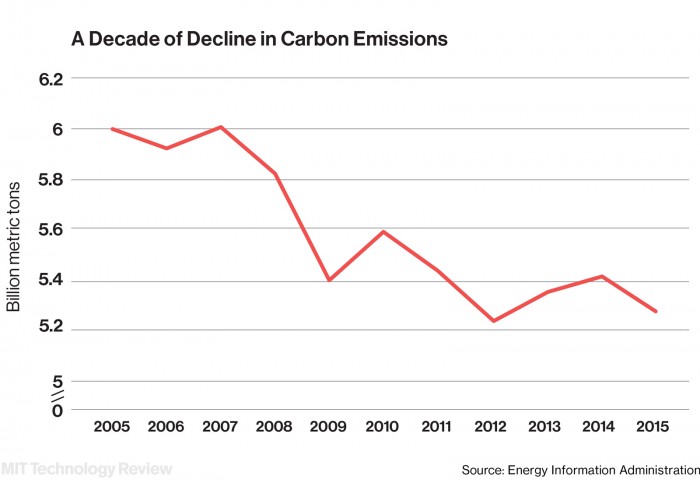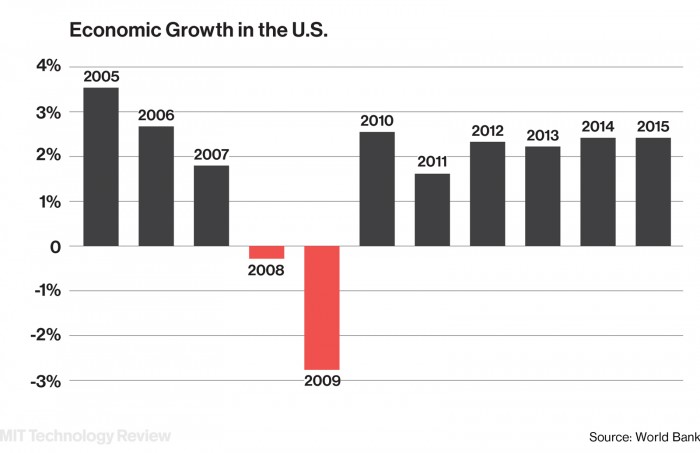Carbon Dioxide Emissions Keep Falling in the U.S.
Carbon dioxide emissions in the United States fell again in 2015, according to new data from the federal government. Though the levels increased slightly in 2013 and 2014, last year’s drop is in line with the gradual decline that’s been occurring for a decade. The nearly 5.3 billion metric tons of energy-related carbon dioxide the country added to the atmosphere in 2015 is 12 percent smaller than that number in 2005.

Most of the reduction comes from burning less coal. According to the U.S. Energy Information Administration, changes in the national mix of electricity production—especially the shift toward cleaner-burning natural gas—accounted for 68 percent of the emissions reductions between 2005 and 2015.
A relatively mild winter likely also contributed to the drop seen in 2015. The number of so-called “heating degree days,” an indicator that reflects energy use for heating, was the lowest since 2012.
Fluctuations in annual emissions have also historically tended to reflect economic changes, as seen in the fairly dramatic decrease in 2009, when the country was in a recession.
More recently, however, the U.S. economy has continued to grow even in years that have seen decreases in emissions. In 2015 the economy was 15 percent larger than in 2005, but the country emitted 23 percent less carbon dioxide per dollar of GDP last year compared with 10 years prior.

Europe has also seen a general decline in emissions despite continued economic growth, and a small drop in global emissions in 2015 was the first that did not coincide with a worldwide economic downturn (see “Have Global CO2 Emissions Peaked?”). Whether or not this will continue, however, will depend heavily on how developing economies—especially China and India—meet growing demand for energy.
In the U.S., the decoupling of emissions from economic growth was largely a result of the boom in domestic gas production thanks to hydraulic fracturing. And while the deployment of renewable energy technologies has also increased substantially of late, burning natural gas instead of coal for electricity will likely continue to be the main contributor to emissions declines for years to come.
Keep Reading
Most Popular
Large language models can do jaw-dropping things. But nobody knows exactly why.
And that's a problem. Figuring it out is one of the biggest scientific puzzles of our time and a crucial step towards controlling more powerful future models.
How scientists traced a mysterious covid case back to six toilets
When wastewater surveillance turns into a hunt for a single infected individual, the ethics get tricky.
The problem with plug-in hybrids? Their drivers.
Plug-in hybrids are often sold as a transition to EVs, but new data from Europe shows we’re still underestimating the emissions they produce.
Stay connected
Get the latest updates from
MIT Technology Review
Discover special offers, top stories, upcoming events, and more.